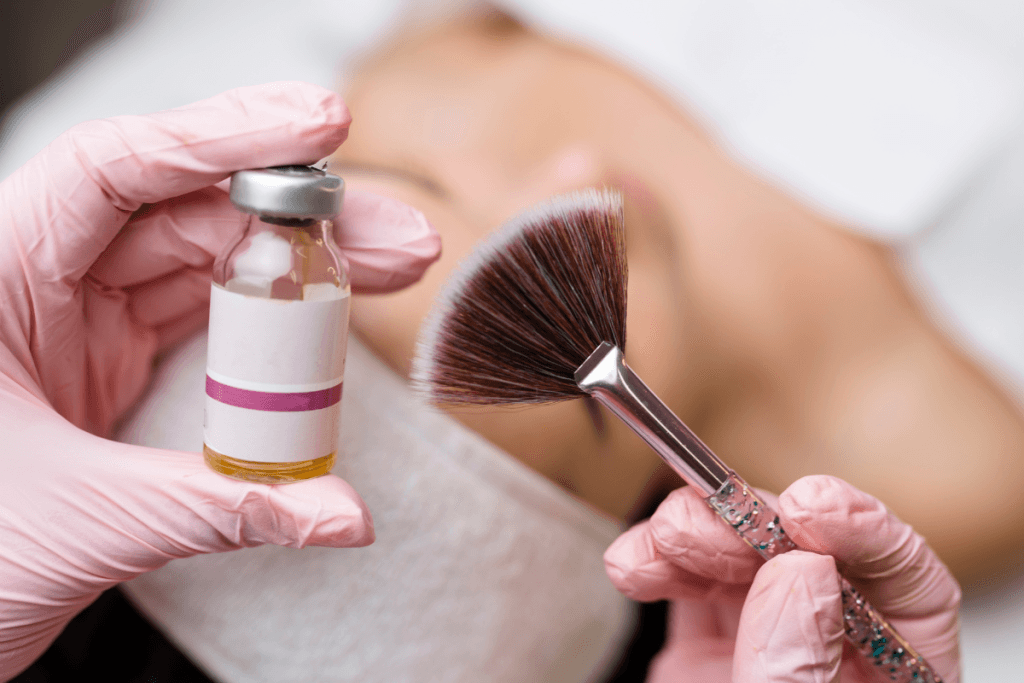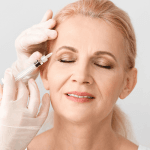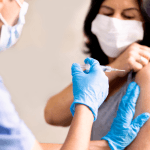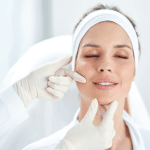As demand grows for regenerative treatments that avoid aggressive exfoliation, the PRX-T33 treatment has emerged as a compelling option for aesthetic professionals. This biorevitalization solution offers visible skin renewal without peeling, combining trichloroacetic acid (TCA), kojic acid, and hydrogen peroxide in a non-invasive protocol suitable for year-round application.
Used in professional settings to improve texture, tone, and radiance, PRX-T33 delivers notable results with minimal downtime. This article examines its mechanism of action, clinical advantages, application protocols, and how it integrates into treatment plans.
What is PRX-T33?
PRX-T33 is a topical biorevitalizer that penetrates the skin without causing visible exfoliation. Though it is often referred to as a “PRX-T33 peel,” it does not behave like traditional chemical peels. Instead, it stimulates dermal activity while leaving the epidermis intact. This makes it suitable for patients seeking brighter, firmer skin without the recovery time usually associated with deeper peels.
The formulation includes 33% TCA, hydrogen peroxide to modulate irritation, and kojic acid for pigment regulation. These ingredients work synergistically to promote fibroblast activity, enhance skin firmness, and improve discoloration without causing frost or flaking. Because the epidermal barrier remains largely undisturbed, the PRX-T33 treatment is safe across skin types and seasons.
PRX-T33 Benefits in Clinical Practice
For clinics offering skin rejuvenation services, PRX-T33 delivers multiple advantages. It addresses superficial imperfections such as dullness, uneven texture, and mild laxity, without downtime or significant patient discomfort.
Among the key PRX-T33 benefits are:
- No peeling or frosting, enabling patients to return immediately to daily activities
- Immediate skin radiance and plumping effects
- Progressive improvement in firmness and elasticity with repeated sessions
- Safe application on the face, neck, décolleté, and other delicate areas
- Compatibility with other in-clinic modalities, such as microneedling or injectables
These characteristics make PRX-T33 a versatile option, particularly for patients reluctant to undergo ablative treatments or traditional TCA peels.
Application and Protocol
The PRX-T33 treatment is applied by trained professionals following a standard cleansing process. After drying the skin, the solution is massaged into the target area using a firm, pressure-based technique. Depending on the patient’s tolerance and skin condition, 2 to 4 layers may be applied.
Once absorbed, the product is neutralized using a post-treatment cleanser and followed by a hydrating cream. Patients are advised to continue with moisturizers and sun protection at home. A course of 4 to 6 weekly sessions is typically recommended for optimal PRX-T33 results.
The immediate effect is a visibly refreshed complexion. Deeper skin remodeling continues over several weeks as collagen synthesis is stimulated.
Combining PRX-T33 with Other Treatments
This protocol can be integrated into broader aesthetic plans. Many practitioners combine PRX-T33 with microneedling, RF treatments, or injectable protocols to enhance tissue regeneration. Because it is non-photosensitizing, it can be used in summer or on patients who are otherwise contraindicated for standard peeling agents.
It also works well between laser or filler sessions to support skin quality while avoiding overtreatment.
Managing PRX-T33 Side Effects
When performed correctly, adverse events are rare. However, as with any active topical procedure, PRX-T33 side effects can include mild redness, stinging, or warmth during application. These reactions typically subside within minutes to a few hours.
Post-procedure guidelines should be reviewed during consultation. Patients with barrier-compromised skin or hypersensitivity may need product substitution or a gentler approach. Proper skin priming and assessment reduce the likelihood of adverse outcomes.
Patient Selection and Consultation Strategy
Ideal candidates for PRX-T33 include those seeking preventive skin care, early signs of aging, or pigmentation improvement without downtime. The protocol is appropriate for a wide range of phototypes and can be customized based on individual goals.
During the consultation, it’s useful to address what PRX-T33 is, how it differs from traditional peels, and set realistic expectations. Before-and-after photos help convey potential results, while a short explanation of the science behind it builds confidence in the treatment.
Ordering and Product Supply
Sourcing genuine products is key to ensuring consistent treatment results. Whether you’re offering PRX-T33 or seeking reliable supply channels, understanding product authenticity, shipping timelines, and usage efficiency can enhance your practice.
Explore our PRX-T33 Product Page to discover trusted sourcing options that align with your clinic’s needs. You’ll find expert-approved resources and essential information to maintain regulatory standards and product traceability throughout your treatment journey.
Takeaways
The PRX-T33 treatment represents a shift in skin rejuvenation approaches, offering deep dermal stimulation without the visible peeling of traditional methods. Its ability to deliver measurable improvements in texture, radiance, and firmness, without compromising patient lifestyle, makes it a valuable addition to modern aesthetic practices.
When evaluating biorevitalization tools, understanding what PRX-T33 is and how it fits into combination therapy is key to achieving long-term outcomes. By balancing innovation with safety, this treatment offers aesthetic providers a reliable option for progressive, no-downtime skin regeneration.
Frequently Asked Questions (FAQs)
How often should PRX-T33 be performed?
A typical course includes 4 to 6 sessions spaced 1 week apart. Maintenance treatments may be required every few months, depending on patient goals.
Can PRX-T33 be used on darker skin types?
Yes. Because it does not cause epidermal damage or post-inflammatory hyperpigmentation, it is considered safe for all Fitzpatrick types.
Is it necessary to prepare the skin before a PRX-T33 peel?
In most cases, a preparation phase isn’t needed. However, patients with compromised skin barriers or sensitivity may benefit from a gentle prep routine using hydrating serums or ceramide-rich creams.






